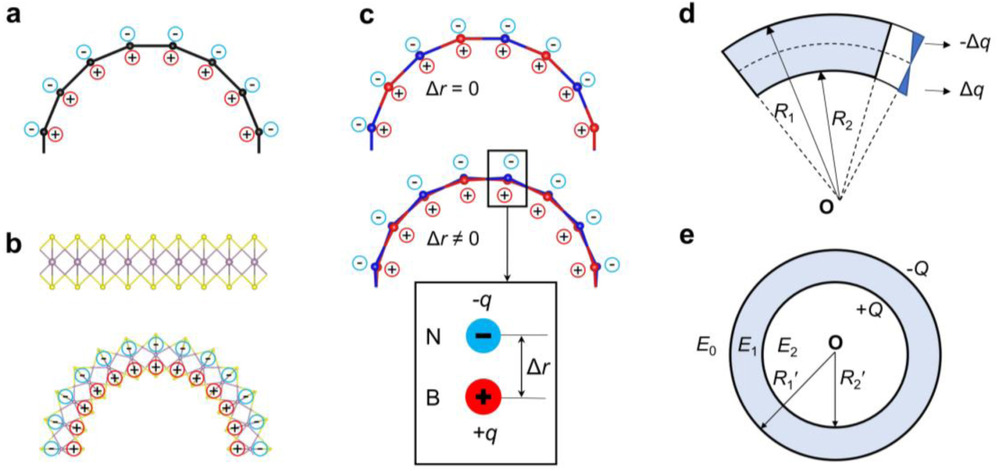Hanze Guo, Tingfan Yang, Xiaoyu Xuan, Zhuhua Zhang, Wanlin Guo.
Extreme Mechanics Letters, 10699,2022
Abstract:
Two-dimensional (2D) materials are highly bendable due to their atomic thickness and, thus, can readily attain a large strain gradient hard to achieve in bulk materials. This attribute provides a unique platform to explore the coupling between strain gradient and electric polarization, referred to as flexoelectric effect. Here, we perform an intensive first-principles study of the flexoelectric effect in hexagonal boron nitride (h-BN) monolayer for its potential applications in harsh environments. Despite being an isoelectronic isomorph of graphene, h-BN exhibits a distinctly higher flexoelectric coefficient than graphene does, along with a stronger nonlinearity. The enhanced flexoelectricity is ascribed to bending-induced structural buckling that separates B and N atoms into two coaxially curved surfaces, whose effect is well quantified by a model analysis. This behavior also helps rationalize why the three-atom-thick MoS2 has the largest flexoelectric coefficient among these 2D materials. We also find that the flexoelectricity results in a staggered band gap in all double-walled BN nanotubes that can favor charge separation in photovoltaics, in contrast to the size- and chirality-dependent band alignment in double-walled carbon nanotubes.

Link: https://doi.org/10.1016/j.eml.2022.1https://doi.org/10.1016/j.eml.2022.10166901669
--校内链接--
--校外链接--

微信公众号